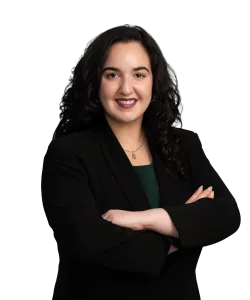Gender-Affirming Care for Minors: Executive Order 14187 and Its Implications for Hospitals and Health Systems
President Trump’s Executive Order (EO) 14187, “Protecting Children from Chemical and Surgical Mutilation,” represents a significant shift in federal policy regarding gender-affirming care (GAC) for minors.
Among its directives, EO 14187 instructs federal agencies to restrict support and funding for such care, placing children’s hospitals and academic medical centers — many of which depend on federal funding — in a precarious position. In this installment of our ongoing series exploring the legal uncertainties surrounding GAC for minors, we review EO 14187, the legal challenges that have ensued, and the implications for health care organizations that provide GAC to minors.
EO 14187: Protecting Children from “Destructive and Life-Altering Procedures”
EO 14187 asserts that “it is the policy of the United States that it will not fund, sponsor, promote, assist, or support the so-called ‘transition’ of a child from one sex to another, and it will rigorously enforce all laws that prohibit or limit these destructive and life-altering procedures.” This policy aligns with recent legislative trends in more than half of the states, which have imposed limitations on GAC for minors. As we discussed in our first installment, the constitutionality of these restrictive state laws hangs in the balance in United States v. Skrmetti, No. 23-477 (U.S. argued Dec. 4, 2024), which is pending before the US Supreme Court.
Like the laws that many states have passed, EO 14187 specifically targets the use of puberty blockers and sex hormones and the performance of surgical procedures for GAC purposes (collectively, the prohibited services). The order defines a “child” as an individual younger than 19 years of age.
Key actions that EO 14187 calls for include the following:
- Restrictions on Federal Funds: Federal agencies that provide research or education grants to medical institutions, including medical schools and hospitals, must immediately “take appropriate steps” to ensure that those institutions cease providing prohibited services to children. This directive reinforces another executive order, EO 14168, which mandates federal agencies to “assess grant conditions and grantee preferences and ensure grant funds do not promote gender ideology.” That order describes “gender ideology” as an ideology that promotes “the false claim that males can identify as and thus become women and vice versa, and require[es] all institutions of society to regard this false claim as true.”
- Actions by HHS: The Secretary of the US Department of Health and Human Services (HHS) must take comprehensive regulatory actions to end the provision of prohibited services to children. This includes revisiting Medicare and Medicaid conditions of participation and coverage, enforcement of the nondiscrimination requirements of Section 1557 of the Affordable Care Act, and essential health benefit requirements of certain health plans.
- Actions by the Attorney General: The Attorney General must take various actions to review and enforce existing criminal and civil laws that the order suggests may be triggered by providing or facilitating prohibited services to children. Among these laws, the Attorney General must review and “prioritize enforcement of protections against female genital mutilation” under 18 U.S.C. § 116, which makes it a crime to perform, or attempt or conspire to perform, “female genital mutilation” on a person younger than 18.
In sum, EO 14187 aims to curtail the provision of GAC services to those under 19 across the country. For hospitals and clinics, especially children’s hospitals and academic medical centers, the immediate concern was clear: Compliance could eventually require discontinuing prohibited services for those under 19 or risking the loss of critical federal funding and program participation. Faced with this risk, hospitals across the country, including in Colorado, Virginia, and New York, reportedly halted prohibited services for patients under 19 shortly after President Trump issued EO 14187.
The Legal Challenges
Within days of EO 14187’s issuance, two major lawsuits were filed in federal district court in Maryland and Washington State — one by civil rights advocates and another by a coalition of states — to challenge the provisions of EOs 14187 and 14168 relating to federal grant funding. The plaintiffs argue that the orders are unconstitutional and unlawful on multiple grounds, including that the orders impose conditions on funding without congressional approval and discriminate on the basis of sex and transgender status in violation of the equal protection component of the Fifth Amendment to the US Constitution.
The courts agreed that the plaintiffs were likely to succeed on their claims that the EOs violate the constitutional separation of powers and the right to equal protection. Accordingly, both courts issued preliminary injunctions, which temporarily prohibit the defendant government parties from conditioning, withholding, or terminating funding under EO 14187 or 14168 on the fact that a health care entity or health professional provides a prohibited service to a patient younger than 19. The injunction in the Maryland case (PFLAG, Inc. v. Trump, No. 8:25-cv-00337, 2025 WL 1234567 (D. Md. Mar. 4, 2025)) is nationwide in scope, meaning that the government parties are prohibited from engaging in the enjoined conduct anywhere in the country. By contrast, the injunction in the Washington case (Washington v. Trump, No. 2:25-cv-00244, 2025 WL 2345678 (W.D. Wash. Feb. 28, 2025)) applies only in the plaintiff states of Colorado, Minnesota, Oregon, and Washington.
As of this writing, the federal government has appealed the Maryland court’s injunction to the US Court of Appeals for the Fourth Circuit.
Implications for Hospitals and Health Systems
For hospitals, health systems, and other health care organizations — particularly children’s hospitals and academic medical centers that often serve transgender youth — EO 14187 raises pressing compliance and operational questions. Even though the order is presently stalled, its potential effects and the Administration’s continued push mean that organizations must prepare for various scenarios. Key considerations include:
- Ongoing Agency Actions: Organizations should monitor for and respond to federal policy developments that are not precluded by the court injunctions, as the Administration has signaled that it is proceeding with its policy agenda to the extent possible. Since the courts ordered the injunctions, at least two HHS subagencies — the Centers for Medicare and Medicaid Services (CMS) and the Health Resources and Services Administration (HRSA) — have issued notices hewing to the objectives of EO 14187. In a special alert dated March 5 to hospitals and other health care providers, CMS noted that it “may begin taking steps” to appropriately update its policies to protect children from the services prohibited by EO 14187. Similarly, HRSA stated in a March 6 letter that it “will review its policies, grants and programs,” including funding to children’s hospitals through the Children’s Hospitals Graduate Medical Education Payment Program. The plaintiffs in the PFLAG litigation claimed in a March 7 motion to enforce the injunction that the government’s communications were effectively renewed threats to withhold funding, in violation of the court’s order, but the court disagreed and denied that motion on March 28. Until the underlying litigation is resolved, organizations find themselves in a state of regulatory flux: temporarily protected by the injunctions, yet aware that federal agencies are poised to limit GAC for minors if given the legal green light.
- Federal Funding Exposure: EO 14187 specifically jeopardizes research and education grants for organizations providing prohibited services to individuals under 19 and portends possible Medicare and Medicaid participation conditions that tie funding to compliance with the order. Academic medical centers and teaching hospitals, which commonly depend on National Institutes of Health grants, training funds, and Medicare and Medicaid dollars, should inventory all federal funding streams connected to the organization. This inventory will help gauge the impact if the order (or similar policies) eventually is implemented. For instance, organizations should determine if prohibited services are offered to individuals under 19 within any unit of the organization that receives federal grants or reimbursements, as those could be focal points of enforcement. Identifying these dependencies now — particularly in light of an April 11 letter from CMS to state Medicaid directors that warns that the services prohibited by EO 14187 may harm some children and be in conflict with Medicaid funding requirements — will allow for proactive risk management and contingency planning.
- State Law Variability: In addition to federal policy developments, organizations must navigate the patchwork of state laws on GAC for minors, which differ widely. While some states explicitly protect access to GAC for minors or prohibit health care discrimination based on gender identity, others have enacted restrictions on such care. Pending the Supreme Court’s decision in Skrmetti, these state laws continue to govern the permissibility of treatment regardless of federal action. Organizations should ensure their policies align with their state’s law — for example, providers in states with bans should already have ceased those services for minors, whereas providers in permissive states may lawfully continue. However, if federal rules eventually prohibit GAC for minors nationwide (via funding conditions or otherwise), providers in pro-GAC states could face a conflict between state law and federal requirements. For example, in California, the Attorney General warned hospitals and federally funded health care providers that they still “have a legal obligation to provide equal access to healthcare services” under the state’s antidiscrimination laws, notwithstanding EO 14187. Organizations should monitor developments at both the federal and state levels, and be prepared to adjust practices or challenge conflicting directives. Organizations operating in multiple states should be especially cautious to tailor compliance by jurisdiction.
- Clinical Operations and Patient Care: Organizations should maintain clear communication with clinical leadership and care teams about the evolving legal environment. Front-line providers need to understand that the federal government’s stance on GAC for minors has changed but that at present a court order allows continued care. These communications should inform clinicians that patient care can proceed as usual for now but also describe protocols if the legal situation changes. Organizations should consider developing internal guidelines or decision-making frameworks for responding to a potential reinstatement of the funding restrictions in EOs 14187 and 14168. It is also prudent to have a plan for communicating with patients and families should services have to be modified or referred out due to legal constraints. Proactive planning can help avoid confusion and ensure that any transitions in care (if required by law) are handled legally.
Looking Ahead
The legal landscape surrounding GAC for minors remains fluid, with significant implications for health care providers and institutions. For now, the preliminary injunctions in the PFLAG and Washington cases allow hospitals, research universities, and other organizations to continue offering GAC to minors (where otherwise legal) without risk of federal funding penalties under EO 14187 or 14168. However, whether the appeals courts will uphold these injunctions is unclear. The Supreme Court’s forthcoming decision in the Skrmetti case could be pivotal, as it could set a precedent for how lower courts must analyze equal protection claims in the context of transgender rights, potentially reshaping the legal framework for scrutinizing GAC laws.
Amid this unsettled legal landscape, children’s hospitals, academic medical centers, and other organizations providing GAC services to minors should work closely with legal counsel to determine how EO 14187 (and any subsequent regulations or court decisions) may impact their specific operations. Counsel can assist in several strategic ways, including by conducting a risk assessment of continuing GAC services for minors, interpreting overlapping federal and state mandates, advising on possible restructuring (for example, separating certain services into distinct entities) to mitigate funding risks, and preparing comments or advocacy during any federal rulemaking process that might arise from the order. In these respects, organizations can ready themselves to take appropriate actions to ensure compliance with the law while also protecting patient care to the greatest extent possible.
Contacts
- Related Industries
- Related Practices


